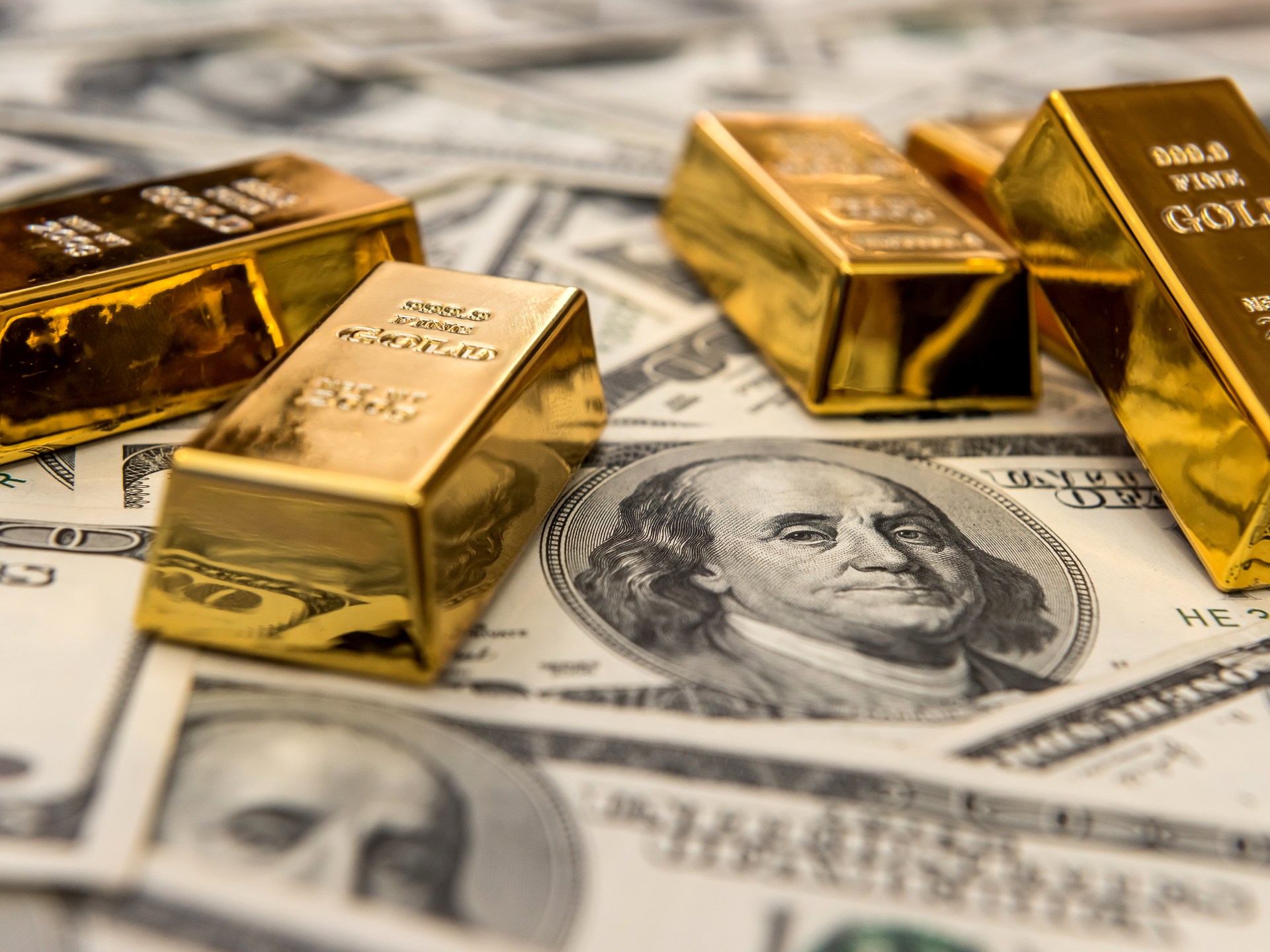Gold futures and spot contracts have risen since the beginning of April above two thousand dollars an ounce for the first time since August 2020, amid rising global economic risks.
The price of an ounce of gold earlier this month reached $ 2024, near the historic peak recorded in August 2020, which was then $ 2073.
Gold is a store of value, used as an inflation hedge and a safe haven in times of geopolitical crisis and economic and financial turmoil.
Gold does not generate any interest income, but it preserves the value of cash as much as possible in case of risks that may affect currencies; holding the yellow metal costs money, as storage and insurance are among the costs of holding gold.
Gold is a safe haven in times of geopolitical crisis and economic and financial turmoil (Shutterstock)
Origins & Features
Historically, gold has been considered the best safe-haven asset for reasons associated with scarcity and tight supply, unlike currencies that can be printed at any time.
Gold has become a companion to global crises, and derives its energy from them, thanks to the high demand for it in cases of political, economic and even health uncertainty, as happened in the first months of the Corona pandemic.
Gold has also turned into one of the most important reserve assets for central banks around the world, with total reserves of 35.5 thousand tons, with a US lead of more than 8133 tons.
While the United States has these gold reserves, its cash reserves are almost zero, according to US Federal Reserve data, due to the Fed's ability to print dollars without a ceiling.
While the power of all currencies around the world can be changed by central banks, gold prices are determined solely by supply and demand, and there are no other factors in the hands of any country in which the price of gold is determined.
Gold is unerodable and moves in the opposite direction to the dollar (Shutterstock)
Safe Haven
At the level of countries and even individuals, gold turns into a safe haven in case of any risks, the most recent of which is the US banking crisis since last March.
The crisis that has faced banks and disrupted the global economy so far, which threatens the possibility of the collapse of the bank "First Republic" (First Republic) pushed the prices of an ounce of gold above $ 2024.
This is because gold is the first form of currency in the world, and its physical properties mean that it is a store of value, it is available for trading, but the supply is limited, i.e. rare.
Unlike some other metals around the world such as silver, platinum and copper, gold is not corrosive and moves in the opposite direction to the dollar.
The appreciation of the US currency when raising interest rates, for example, pushes gold contracts to need fewer dollars to buy an ounce, as interest rates have an inverse relationship with gold, as has been done with the journey of raising interest rates since March 2022.
While expectations of the US Federal Reserve maintaining interest rates or slowing sharp increases have risen today, this adds strength to gold, as it trades on Friday at an average of $1995,<> an ounce.
Gold is also a good hedge against inflation risk, as the rising cost of commodities tends to erode the value of the dollar, and then the price reacts to inflation figures; usually, the value of gold rises when the cost of living increases.
Geopolitical factors causing crises also affect gold prices positively, because gold acts as a safe haven and outperforms other asset classes.

